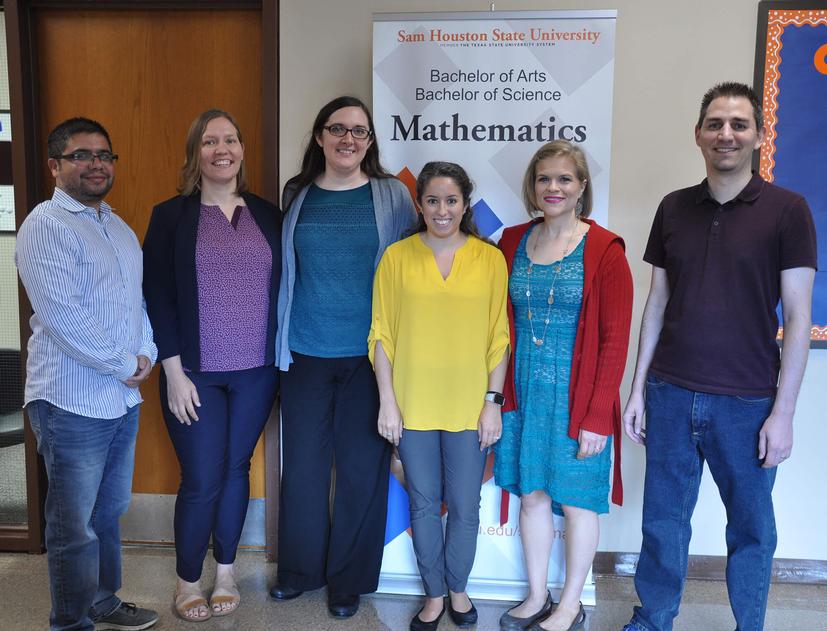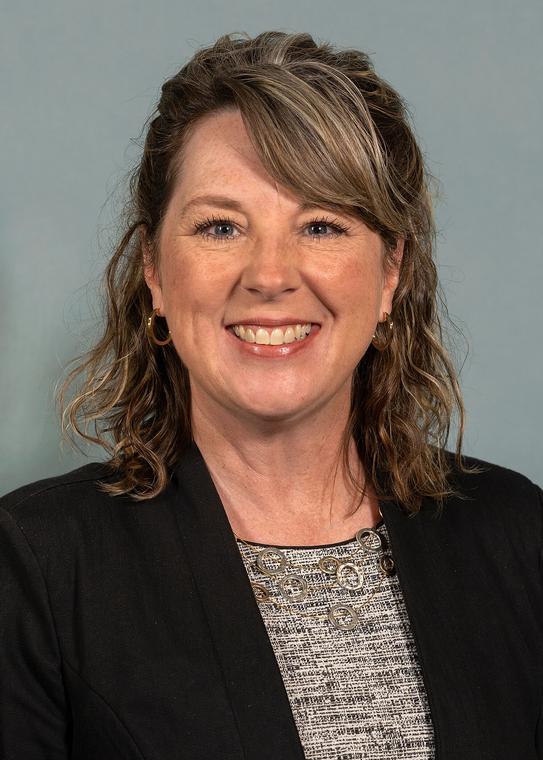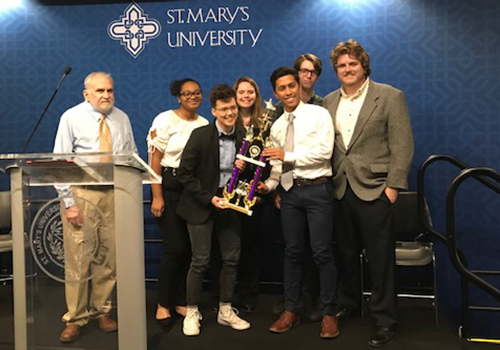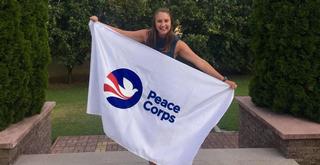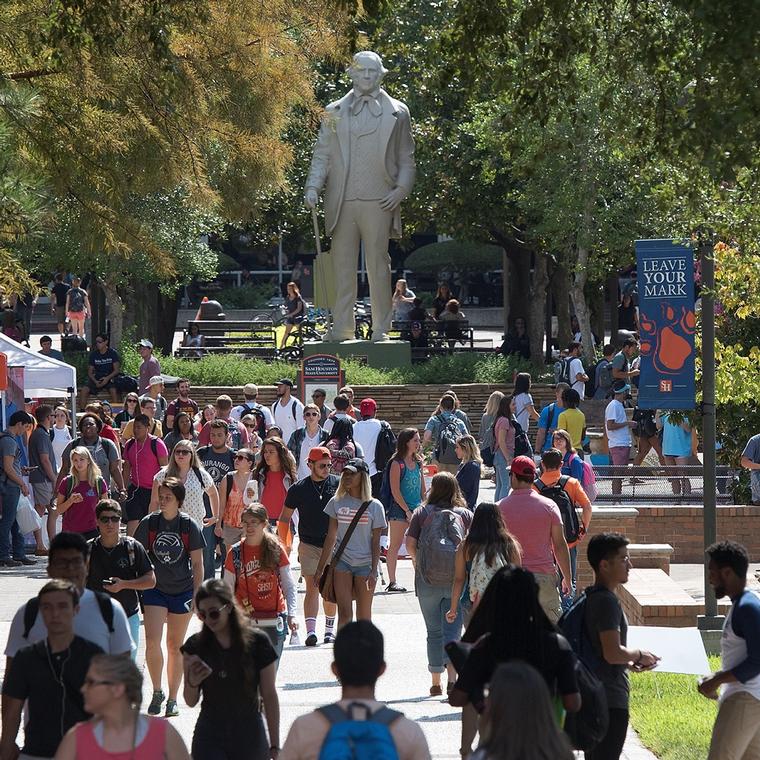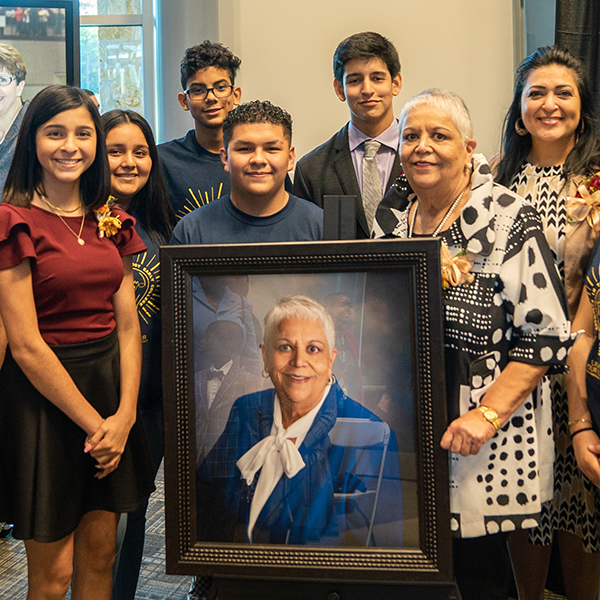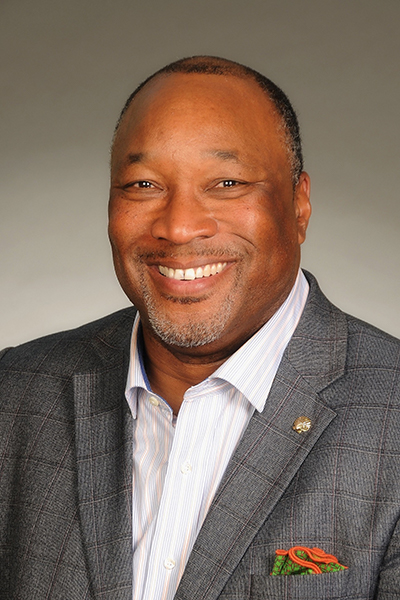- Sections :
- Crime & Public Safety
- Restaurants & Food
- Sports
- More
Categories
Sam Houston State Leading the Way in Free Textbook Adoption
HUNTSVILLE, TX -- For more than a decade, the Department of Mathematics and Statistics at Sam Houston State University has championed the usage of Open Education Resources (OER) or free open textbooks in their courses. Open textbooks are textbooks that have been published, and licensed to be freely used, adapted and distributed. A large number of these books have been reviewed by faculty from a variety of colleges and universities to assess their quality. In particular, the NSF-funded American Institute of Mathematics maintains a list of open textbooks suitable for use in traditional university courses. These books can be downloaded for no cost, or printed at low cost.
At SHSU, several professors have taught sections of College Mathematics, Elementary Functions, Calculus I, II, and III, Discrete Mathematics, Linear Algebra, Introduction to Math Thought, Algebraic Structures, and several graduate, honors, and special topics courses using open materials. Notably, professor of Mathematics Ken Smith designed MATH 1410 Elementary Functions around an open textbook and has taught using these resources for many years.
Their individual efforts have developed into a new and important departmental initiative. Since fall 2019, the department has adopted the textbook “Math in Society” by David Lippman as the standard textbook used for the popular college mathematics course, Math 1332. All 17 sections of Math 1332 in fall 2019 have utilized this free book, replacing the textbook formerly adopted for the course that cost students close to $120 per copy. This saved the 888 students registered for the course a total of approximately $106,000 this semester.
“Based on our historical enrollment, we expect that moving to a free textbook in this course will save our students over $156,000 every year,' Associate Department Chair Luis David Garcia Puente said.
In addition, Mathematics professors Martin Malandro and Sarah Fritsch are leading an effort by the department to implement the free online homework system www.myopenmath.com in several classes, including Math 1332. Their goal is to replace traditional commercial online homework systems, which can be costly for students, with a free, high-quality alternative.
'MyOpenMath was designed by a mathematician, for mathematicians,' Malandro said. 'It is easy to write questions and assemble assignments in MyOpenMath. It supports everything you would need up through calculus and linear algebra, including graphing and checking for algebraically equivalent answers. There's also a whole community of people from around the world writing and sharing new questions every day that any professor in the system can use for their classes. It's better than any paid online homework system I've tried, and best of all, it's free.'
So far, Malandro and Fritsch have contributed over 300 math problems to the community.
“I have seen a real difference in my students’ experience this semester because they do not have to navigate the confusion and expense purchasing access codes just to start their course work,” Fritsch said. “I’m so happy to have one more barrier removed that used to prevent students from being fully engaged in their mathematics course from day one.”
Erin Owens, scholarly communications librarian, has been tasked with promoting the understanding and adoption of OER. She views this initiative in the Department of Mathematics as both exciting and important.
“I hope their success will inspire other departments to closely evaluate the cost of their selected texts and to consider what alternative options are available. Any chairs or professors who would like assistance in discovering, evaluating, or adapting existing OER materials in their subject area should feel encouraged to reach out to the library; we are always eager to support these endeavors,” Owens said. “Librarians are already actively supporting 11 classes whose faculty were awarded the OER Course Redesign Grant from RFY earlier this year; just the first six of those courses which relaunched this fall have already saved SHSU students nearly $58,000. We would love the opportunity to work with more faculty and help the number of OER courses at SHSU to continue to grow.”
Follow the link to learn more about “Teaching with OER: Open & Free Materials.”
At SHSU, several professors have taught sections of College Mathematics, Elementary Functions, Calculus I, II, and III, Discrete Mathematics, Linear Algebra, Introduction to Math Thought, Algebraic Structures, and several graduate, honors, and special topics courses using open materials. Notably, professor of Mathematics Ken Smith designed MATH 1410 Elementary Functions around an open textbook and has taught using these resources for many years.
Their individual efforts have developed into a new and important departmental initiative. Since fall 2019, the department has adopted the textbook “Math in Society” by David Lippman as the standard textbook used for the popular college mathematics course, Math 1332. All 17 sections of Math 1332 in fall 2019 have utilized this free book, replacing the textbook formerly adopted for the course that cost students close to $120 per copy. This saved the 888 students registered for the course a total of approximately $106,000 this semester.
“Based on our historical enrollment, we expect that moving to a free textbook in this course will save our students over $156,000 every year,' Associate Department Chair Luis David Garcia Puente said.
In addition, Mathematics professors Martin Malandro and Sarah Fritsch are leading an effort by the department to implement the free online homework system www.myopenmath.com in several classes, including Math 1332. Their goal is to replace traditional commercial online homework systems, which can be costly for students, with a free, high-quality alternative.
'MyOpenMath was designed by a mathematician, for mathematicians,' Malandro said. 'It is easy to write questions and assemble assignments in MyOpenMath. It supports everything you would need up through calculus and linear algebra, including graphing and checking for algebraically equivalent answers. There's also a whole community of people from around the world writing and sharing new questions every day that any professor in the system can use for their classes. It's better than any paid online homework system I've tried, and best of all, it's free.'
So far, Malandro and Fritsch have contributed over 300 math problems to the community.
“I have seen a real difference in my students’ experience this semester because they do not have to navigate the confusion and expense purchasing access codes just to start their course work,” Fritsch said. “I’m so happy to have one more barrier removed that used to prevent students from being fully engaged in their mathematics course from day one.”
Erin Owens, scholarly communications librarian, has been tasked with promoting the understanding and adoption of OER. She views this initiative in the Department of Mathematics as both exciting and important.
“I hope their success will inspire other departments to closely evaluate the cost of their selected texts and to consider what alternative options are available. Any chairs or professors who would like assistance in discovering, evaluating, or adapting existing OER materials in their subject area should feel encouraged to reach out to the library; we are always eager to support these endeavors,” Owens said. “Librarians are already actively supporting 11 classes whose faculty were awarded the OER Course Redesign Grant from RFY earlier this year; just the first six of those courses which relaunched this fall have already saved SHSU students nearly $58,000. We would love the opportunity to work with more faculty and help the number of OER courses at SHSU to continue to grow.”
Follow the link to learn more about “Teaching with OER: Open & Free Materials.”
Comments •


